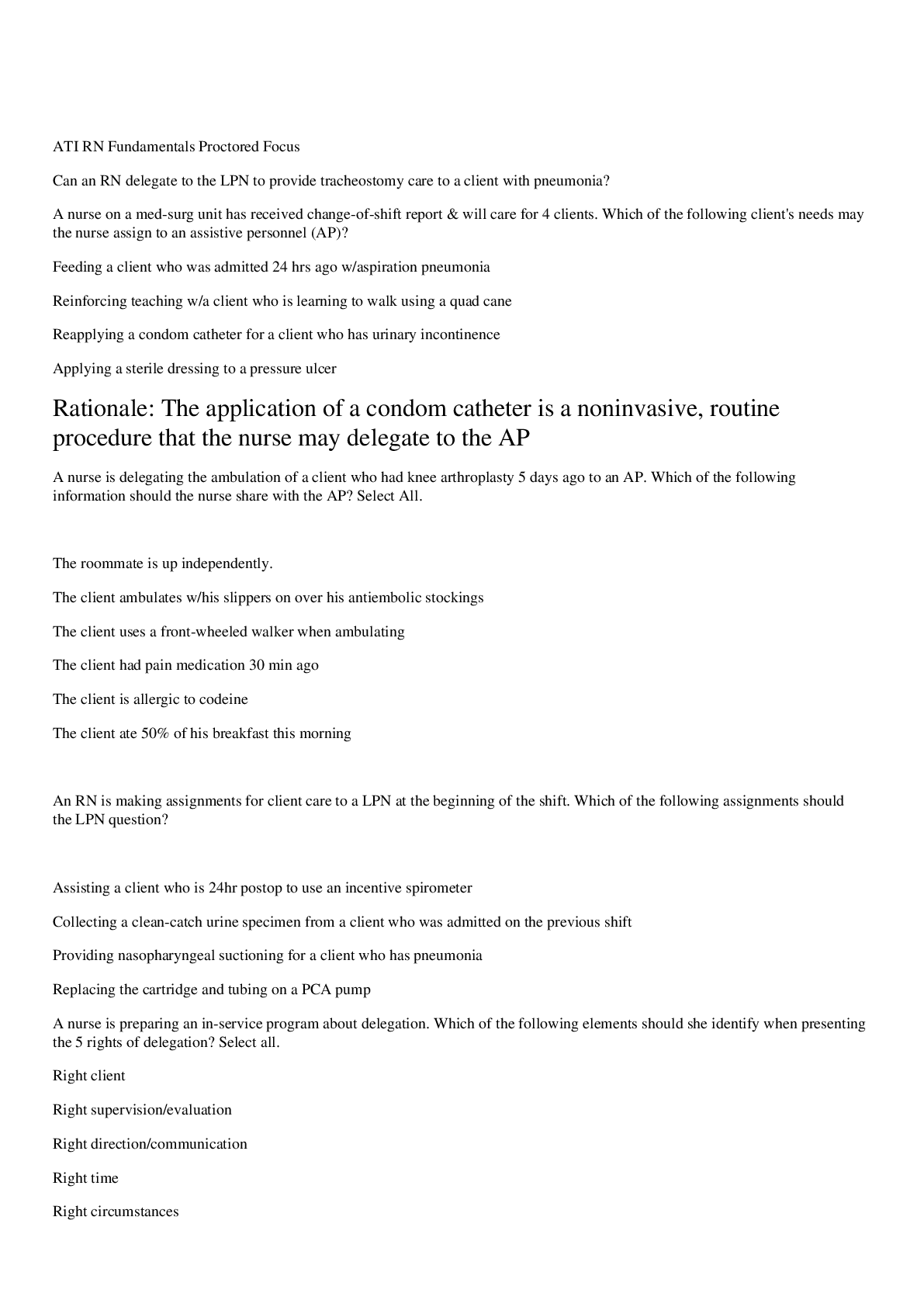*NURSING > EXAM > Chamberlain College of NursingMENTAL NR 326326 nr mental health 2 study guide./Mental Health Exam 2 (All)
Chamberlain College of NursingMENTAL NR 326326 nr mental health 2 study guide./Mental Health Exam 2 Review
Document Content and Description Below
Therapeutic nurse-client relationship - Do: - Allow client to control the discussion - Give recognition/validation - Active listening - Use open-ended question - Example: - Is there something y... ou would like to talk about? - Tell me more about that - So you are saying you haven’t been sleeping well? - Tell me about___ - Dont: - ask why- ask too many questions - give advice - give false reassurance - change the conversation topic - give approval or disapproval - use close-ended questions/statements Examples: - Don’t worry - I think you should ____ - Dont be silly - Thats great Referrals to health care professionals - 12 step program, therapy, psychiatrist, case manager, home health, community mental health services, partial hospitalization Transference and countertransference Transference vs. countertransference (always negative no matter what) - Transference → what happens when a patient feels a certain way about a nurse. EX: The nurse reminds the pt of someone they don’t like (the pt may treat the nurse unfairly) - Countertransference → Feels that the nurse feels some type of way to the patient? EX: The patient reminds the nurse of someone they don't like (nurse may treat that pt unfairly) What can you do when a client refuses tx? -teach pt what will happen if they do not take med, why this med is being given, Restraints: Temporary release is required for basic needs but doesn't discontinue the restraint Give them a trail release and discontinue as soon as possible. -All means have been tried (last resort option) -redirection, meds, de-escalation, therapeutic communication, family being there (can't be a trigger), closer to nurse station/ room assignment change, -reinstate q 4hrs for adult -reinstate q 2hrs 9-17 years old -reinstate q1hr 8 & underNursing Care- check skin integrity, basic needs, ABC’s, Nutrition, COmfort, toileting, ROM, assess mood/ behavior change, check bony prominences, check q 15 min Children- Keep parents notified as to why this happened and current behavior of child 3 kinds of restraints 1. Chemical = benzos [lam/pam] and antipsychotics [haldol, ativan, geodon] 2. Seclusion = restricting their movement 3. Physical = violent patient Cannot threaten pt with restraints (“If you don't do __, we’ll have to put you in restraints”) Improving medication compliance Once daily dosage versus multiple. IM injections at the clinic. Someone handling it for them Reflective communication - helps assist the client with identifying emotions and [Show More]
Last updated: 2 years ago
Preview 1 out of 12 pages

Buy this document to get the full access instantly
Instant Download Access after purchase
Buy NowInstant download
We Accept:

Reviews( 0 )
$16.00
Can't find what you want? Try our AI powered Search
Document information
Connected school, study & course
About the document
Uploaded On
Jul 06, 2021
Number of pages
12
Written in
Additional information
This document has been written for:
Uploaded
Jul 06, 2021
Downloads
0
Views
69














